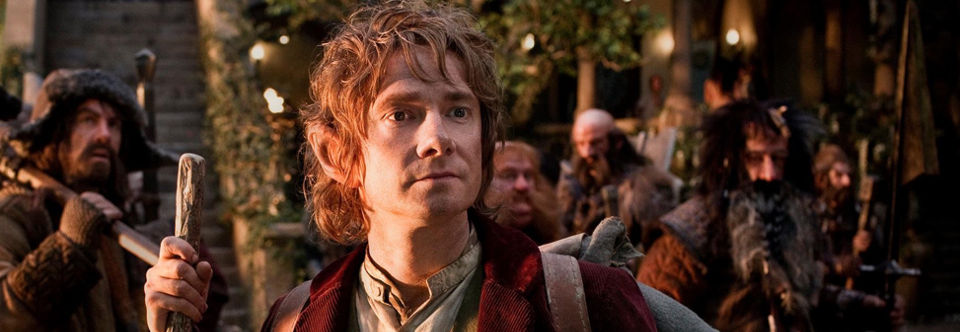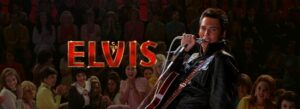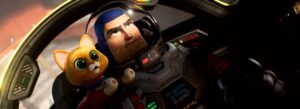
The Hobbit movie has arrived with great fanfare. This wasn’t just the long-awaited revealing of Peter Jackson’s Tolkien expression but even more, it is the beginning of the culmination of a Hobbit’s journey that began over a decade ago in Lord of the Rings – The Fellowship of the Ring. As New Zealanders we’ve fought for the right to film, to act and to display our nation as Middle Earth. Last night I enjoyed a little investment of my own sitting in Hoyts La Premiere class with my wife to take in the shire again, but this time through the 3D High Frame Rate eyes of Peter Jackson’s foray into a movie land of new technology. Because the Hobbit brings more than just a story to the screen this movie review has been broken up into a series of aspects of the movie to see how the jigsaw comes together.
Story
What began as a pitch to Warner Brothers to produce the 300-page novel into a two-picture event has now been stretched to a three-movie deal with Jackson coordinating another two months of shooting in 2013 to fill the storyline. That being said we are even more surprised that already we have been promised an extra 25min of footage in the DVD/Blu-ray version of An Unexpected Journey. So was the heart of the story stretched beyond its ability to maintain connection?
Having just walked into the movie theatre after spending nights reading The Hobbit to my son, I feel I’m tuned in to the story at just the right time. Fran Walsh and Philippa Boyens continue to hold the reins to the LoTR stagecoach and so the story and Tolkien’s heart are in able hands. The two hours and 45min in the theatre seemed to breeze by and although the scriptwriters wrote in some back-story made clear by what we now know of Lord of the Rings, it never seems to break cadence with the original pace of the story.
Characters
One of the critiques of both Tolkien’s story as well as the movie it would portray was the number of characters. After all, we have moved from a fellowship of nine in the LoTR movie trilogy to a band of 15 including 13 dwarves, a Hobbit and a Wizard on tour.
One thing is sure, the perfectly cast Bilbo is dramatically brought to life by Martin Freeman. The Englishman optimises every aspect of the Hobbit’s quirky never quite sure demeanour. From the obsessive-compulsive nature of a Hobbit in a rut through to the coming of age when Bilbo digs deep for courage Freeman is sublime. The matching of the primary characters is never so perfect as when Freeman and Andy Serkis engage Bilbo and Gollum in the game of riddles. This is a beautiful piece of literature delivered by both actors with panache.
Gollum is a more meaty yet wretched creature in this movie. The further advances in motion capture technology have enabled new pick-up points which help define particularly Gollum’s face a point that seems to get more close-up attention in the Hobbit.
The casting of our dwarves is a chaotic yet harmonious ensemble. Richard Armitage leads well in the role of Thorin, a dwarf with a rich heritage looking to lead his people home. Some of the key dwarves holding screen presence include James Nesbitt as Bofur the cook and our own Mark Hadlow captures Dori with almost a fatherly concern. My favourite however is the elderly Balin embodied by Ken Stott to be the statesman of the troop.
We also see the return of LoTR favourites like Elrond (Hugh Weaving), and Galadriel (Cate Blanchett) and we get an introduction to the evil becoming as Saruman (Christopher Lee) seems to thwart Gandalf’s plans for the dwarves. Ian McKellen is back as our Grey Wizard and for what should be a younger wiz he seems definitely more aged. Maybe more visits to Rivendell will inspire and rejuvenate with just a glint of Galadriel’s smile. Even the reuniting of an older Bilbo in 81 yo Ian Holm raises the nostalgia as he begins to write his tale for Frodo’s (Elijah Wood) benefit. Apparently, both Christopher Lee and Ian Holm performed their scenes at the famous Pinewood Studios in the UK to avoid the travel to New Zealand in their 80s.
But like any new story, we also have some fresh faces and The Hobbit abounds even in the first third of the story. While the band of dwarves drive forward in search of a homeland lost the appearance of a nemesis past hunts them down in the form of Azog the Goblin King (Manu Bennett). As the evil in the land grows Radagast the Brown Wizard played by former Dr Who, Sylvester McCoy brings some ecological weirdness to the scene. Our introduction to the three trolls seems to be too short and too sweet but Bert, Tom and William are perfectly embodied by the actor’s Mark Hadlow, William Kircher and Peter Hambleton who also play dwarves Dori, Bifur and Gloin respectively.
Direction and Vision
The heart of this movie was always going to be in the way Peter Jackson sees Middle Earth. While we have become accustomed to what Peter is capable of I was pleasantly surprised that there was a freshness in this delivery. Many of the sets we have seen glimpses of in the LoTR trilogy seem to receive more detail and expanse in this production.
One of the magic aspects of Jackson’s filming is his ability to carry continuity through chase sequences whether the camera is following Hobbits, Orcs or now Dwarves. The filming of the journey across Middle Earth is worthy of every helicopter shot and should make New Zealand Tourism proud.
While not an avid gamer I couldn’t help feeling FPS (First Person Shooter) should now stand for First Person Staffer as we saw Gandalf in full flight whirling his magic staff like a Kendo warrior. The over-the-head filming of the characters as Gandalf and the dwarves fight their way out of the presence of the Goblin King (Barry Humphries) brought the underworld to life like a living rollercoaster. For many, the movie will feel just like a video game where you move from the position of observer to participant just like a gamer. This must surely be music to Jackson’s ears when he has said time and time again that he directs in such a way as to draw the audience into the screen.
3D and HFR (High Frame Rate)
Many were concerned that Jackson was taking the picture to 3D as the purists feel it is still in the gimmick game. What then put the cat amongst the pigeons was when he decided to move beyond cinema’s usual 24fps to embrace a 48fps filming that would bring greater clarity to the screen. While the benefits of filming movement using high-speed frame rates are known, it’s the detail that can lend to a sense of realism closer to what we might see on television. This led some critics to expect more of a “Survivor” look than the movie style we are used to.
My experience of the HFR version started at the point the production houses’ logos appeared on the screen. The clarity and vibrancy of colour were immediately noticeable. Initially, that led me to look at the movie observing the differences in clarity and colour on the screen. It was a significant distraction but one that came from a sense of wonder. One of the key points that seemed to reveal what HFR has to offer was when we had flyovers of the building miniatures with CGI implanted actors within the walls. The detail was amazing which I can imagine would put greater pressure on the modellers but the end result was believable in every sense.
I believe the 3D filming enhanced the Hobbit’s perspective shooting and was engaging. When it came to the HFR shooting we will probably struggle to know what we like until it becomes more of the norm. One thing is sure, the greatest challenge for Directors and Cinematographers wishing to move in the direction of HFR will come back to the lighting and set creation. While the post-production processing will continue to play with colour and light, it’s the on-set contrast of light and dark that helps us define what is natural and fake. HFR will make it harder to produce onscreen subtleties that mirror the real world on the set within a warehouse. What became clear though is the power of the story which did overcome this new technology and won out in the end.
Conclusion
The Hobbit answers all the key expectations in taking us deep into a younger ‘Land of Bilbo’ and introducing us to the endearing dwarves who will battle to carry our Hobbit home. Even though The Hobbit is renowned as more of a children’s book than LoTR it is still a land filled with goblins and demon-like orcs. Some of the imagery was visually impacting for younger viewers and the ‘M’ rating should be a caution. Overall it was an exceptional outing but not without imperfections. While much of the CGI magic from Weta Workshop is without critique, the sledding scenes with Radagast seemed less part of the backdrop than another wizardry. My highlight though would be the way Richard Armitage has developed a character with strength and youthful arrogance yet embodying a vulnerability into the leader that is Thorin. I feel the best is yet to come.
We now wait patiently for Dec 2013 when the second episode; “The Desolation of Smaug” will engage our dragon foe. Thankfully it’s then a short wait till July 2014 for the final conclusion with “There and Back Again”. The first movie’s story was all I could have wanted and more not to mention a superbly rounded episode with a gratifying close just like a Father stopping part way through a bedtime story we can’t wait until the next night’s reading.
It will always be worth more in the Shire but here I’m awarding The Hobbit 4.5 out of 5 popcorns.



